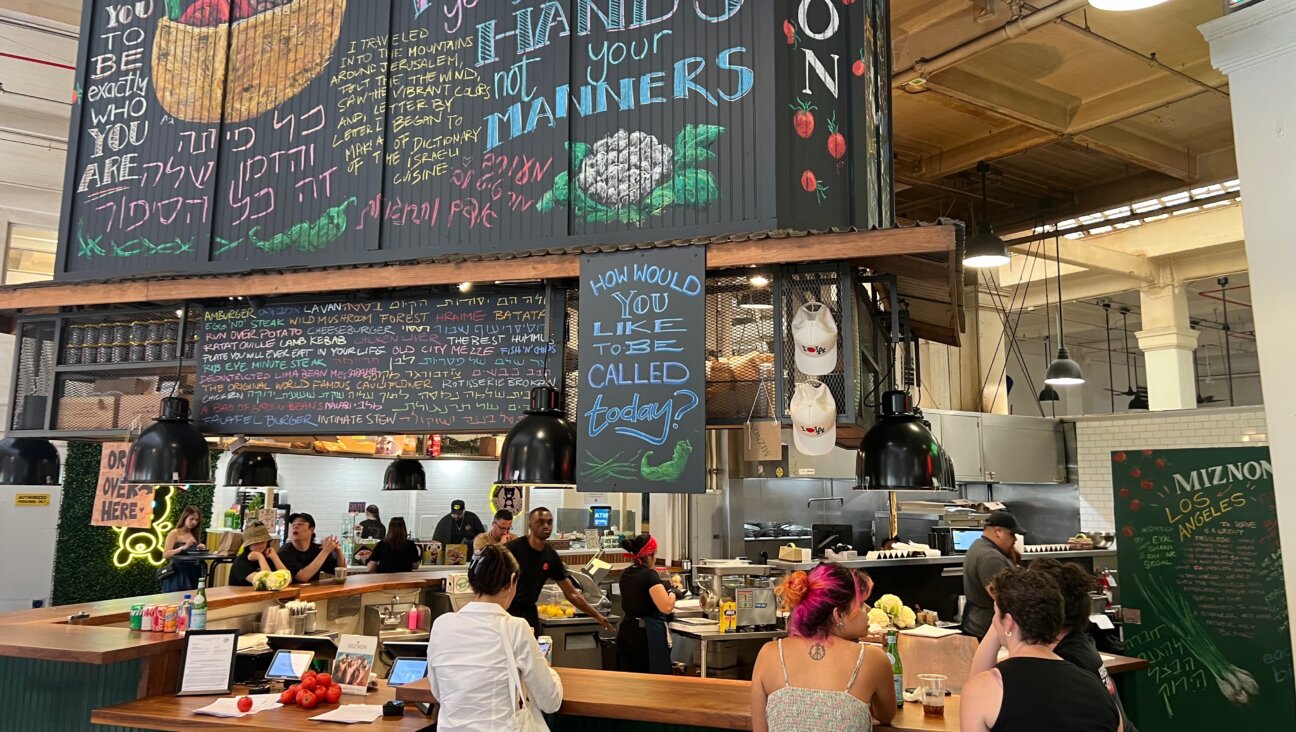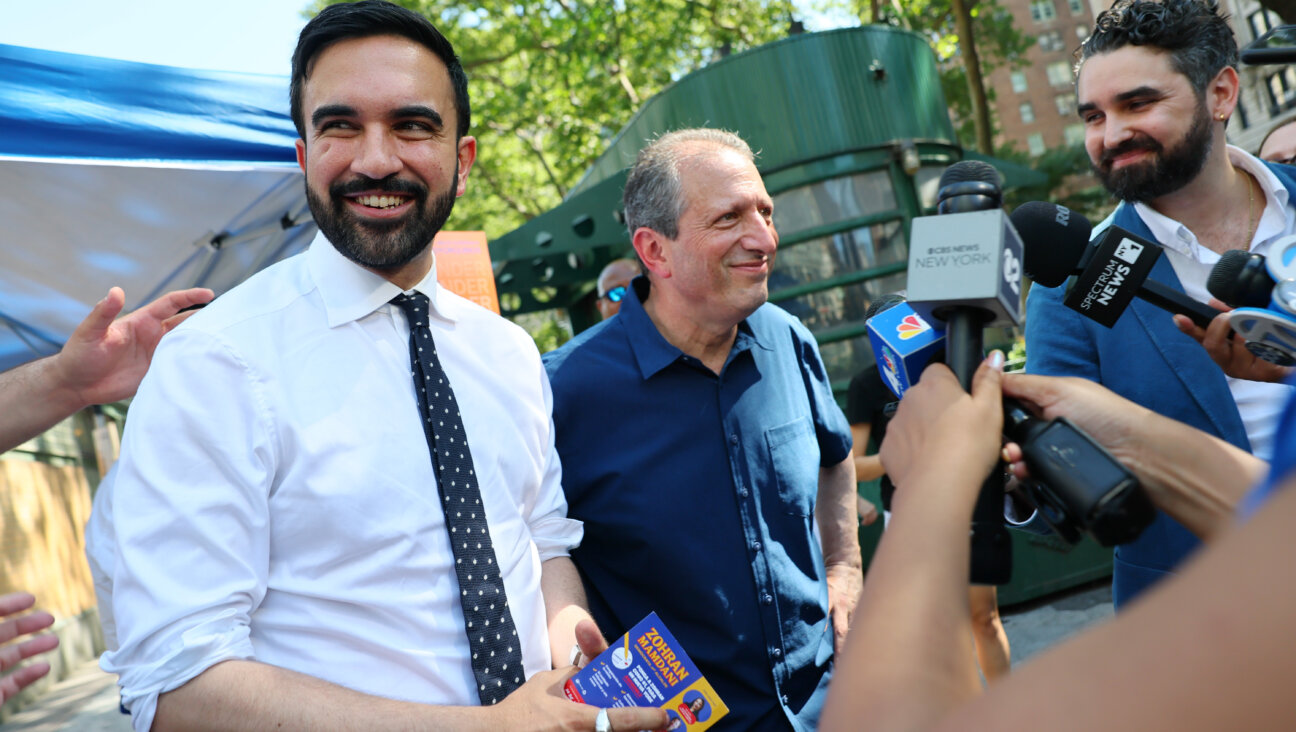Check Our Privilege by Reconnecting With Real Ashkenazi Culture

I’ve been following the growing buzz — generally and in the Forward specifically — around Jewishness, white privilege, and “Ashkenormativity.” As a Yiddishist with an anti-racist agenda, I have a vested interest in understanding Ashkenazi identity in a way that yields a Jewish community that is both inclusive and capable of working across identity boundaries like race and ethnicity to act in solidarity with others.
But I think that we have the tendency to skip a step. We struggle a lot with how best to work with people who are different than we are, but that’s very hard to do if we are not deeply aware of and knowledgeable about our own identity, history, and traditions.
The majority of white Ashkenazi Jews, at least in the more so-called progressive branches of Judaism, are actually drastically disconnected from our own history. We’re so disconnected, especially those of us who are third- or fourth-generation Americans, that we don’t even realize we’re disconnected at all. Not only do we not know about our community’s traditions — we don’t even realize that our community has its own traditions. And I believe that our lack of a conscious, rooted Ashkenazi identity jeopardizes our ability to work against racism both inside the Jewish community and in our work with non-Jewish communities.
So I’m guessing you might be feeling confused right now. How can I possibly be saying that we’re disconnected from Ashkenazi culture and history? The mainstream Jewish world is dominated by Ashkenazi Jews, and we focus constantly on Ashkenazi history and traditions! We don’t need more Ashkenazi culture, we need less of it!
You’re right! The mainstream Jewish community is heavily dominated by Ashkenazi Jews and their traditions. But it’s not that simple. The Ashkenazi culture that has become the “mainstream Jewish culture” is not the be-all and end-all of Ashkenazi identity.
Over the course of the last century, as part of the process of emigrating from Europe, trying to fit in here in the U.S., and dealing with the trauma of the Holocaust, the Ashkenazi community has left behind a huge fraction of its own culture and history. So the Ashkenazi culture that we consider to be mainstream today is a heavily “redacted” version that is missing some of the key components that make an ethnic community robust — like food, language, music, dance and a sense of lineage and history.
You might be thinking, “What about ‘Fiddler on the Roof’? We do have Ashkenazi culture, it’s just kitschy!” — to which I say, “Yes, exactly. What is the historical process by which these cultural elements changed from precious — or even neutral — to embarrassing and kitschy?”
The decision to reject aspects of Ashkenazi history and culture took place in a specific context, as part of the process of assimilating to modern Western society. It was designed to prove that Ashkenazi Jews could fit in as white people — that we could join the ruling class. We got many benefits by becoming white people, but we also paid a high price. In addition to losing a huge chunk of our own identity, we also signed on to the Faustian bargains involved in being white people and participating in the system of racial dominance.
One of the most insidious dynamics in our racial system is that being white simultaneously means two apparently contradictory things. On the one hand, it means being “regular” or “normal,” and on the other hand, it means not knowing who you are — because, after all, whiteness is not a true ethnicity with its own long history, but rather an artificial racial designation that has been established, in its current form, as an American legal fiction for little more than a century.
This combination of “being normal” with “not having a clear identity” is one of the dynamics that helps to maintain white dominance. Defining “normal” or “regular” in opposition to being “ethnic,” “racial,” or “cultural” allows white people to feel like race is someone else’s problem. White people feel that they’re just going along and living their lives and minding their own business, and then suddenly people of color come along and bother them about race, and then white people react by saying “Why should that concern me?”
Meanwhile, because many white people have given up their own ethnic identities in order to become white, they are missing some of the resources that ethnic community provides. They might be missing a sense of identity, of close-knit community, of specific cultural traditions. As a result, white people try to seek out these things from communities of color, which is what’s known as appropriation.
In short, white people have a really hard time interacting with people of color as equals and colleagues. They feel like they either have more worth, “because we’re normal and regular,” or less worth, because “people of color are so much cooler, better dancers, more spiritual, more musical, etc., than we are!” And both of those attitudes are distortions that make it very difficult to build truly collaborative cross-racial relationships.
All of these dynamics are manifest among white Ashkenazi Jews. Yes, Ashkenazi Jews dominate the mainstream of the organized Jewish community. But the Ashkenazi identity now considered mainstream has been “whitened,” or stripped of many of its “ethnic” features in order to count as “white.” As a result, we suffer from that same deadly combination: we feel like we’re “normal Jews, just regular Jews,” and at the same time, we don’t really know who we are. And because we’re disconnected from major aspects of our culture, we’re hungry for ethnicity, and we have a tendency to appropriate the resources of other Jewish ethnic communities, like Sephardi and Mizrachi Jews.
What’s more, when we as white Ashkenazi Jews deal with issues of race outside the Jewish community, we sometimes exhibit the same destructive tendencies as other white people: we feel that race is not or should not be our problem, but then try to benefit from the cultural resources of other ethnic and racial communities. Even those of us who do work actively on issues of race and racism often fall into that second trap, the trap of struggling with our own sense of ethnic disconnection and trying to meet our needs for culture by taking advantage of the cultural resources of people of color.
The bottom line is that it’s really hard to stand in solidarity with people who are different from us if we can’t see them as peers. The system of racial dominance is designed to make us see people who are different from us as both less than we are, and more than we are. To correct both of those distortions and see others just as they are, we also need to come to see ourselves just as we are. To do that, we need to figure out what it means to be Ashkenazi, and to do that, we need to get back in touch with the pieces of Ashkenazi identity that our community has rejected over the years.






















